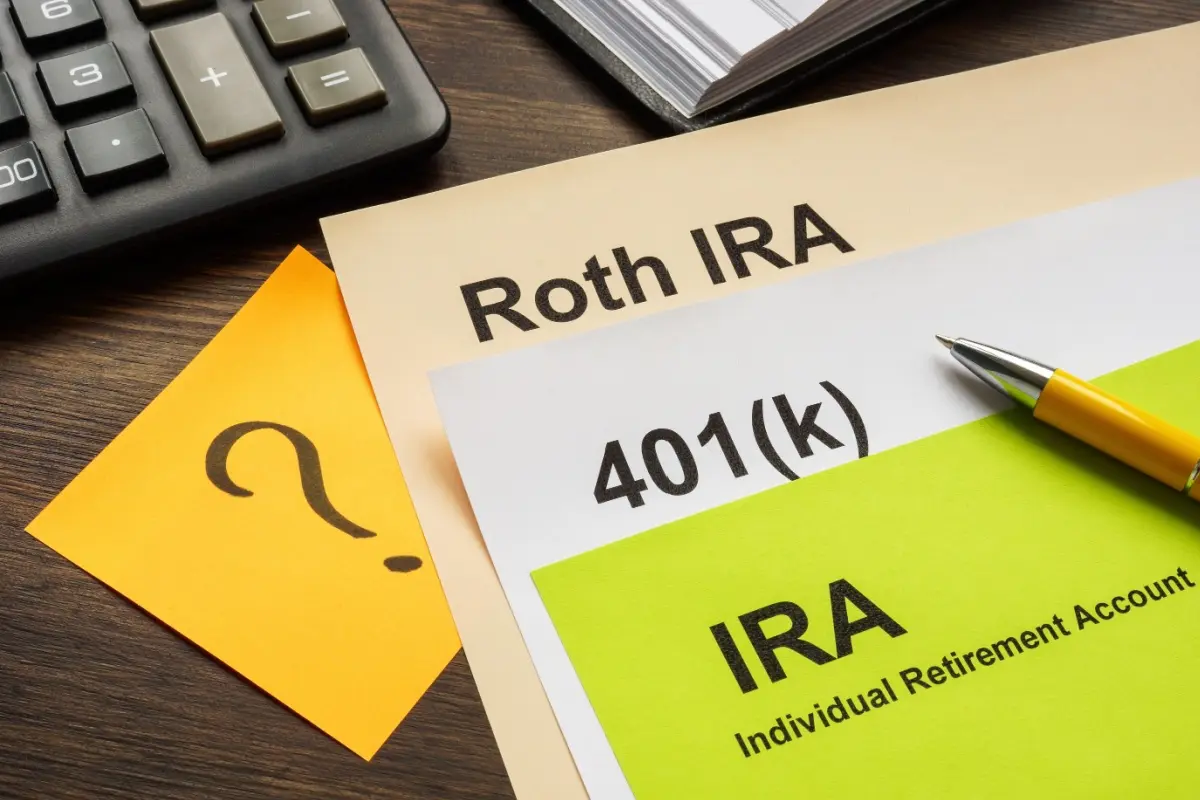Retirement planning isn’t one-size-fits-all, and sometimes, one 401(k) doesn’t cut it. Maybe you’ve changed jobs a few times, or you’re balancing multiple roles with employers who each offer retirement plans.
If you’re curious about how many 401(k)s you can have, and whether managing multiple accounts is a smart move, you’re in the right place.
Understanding Retirement Accounts
Retirement accounts are special savings plans designed to help people build up their money for retirement. These accounts often come with tax benefits, like tax-deferred growth, tax-free withdrawals, and employer contributions, which help save more over time.

There are several types of retirement accounts, each with unique rules and benefits.
401(k)
A 401(k) is one of the most common employer-sponsored plans. It allows employees to save with pre-tax contributions, which reduces taxable income in the contribution year. Many employers also offer matching contributions. For 2025, the annual contribution limit is $23,500. Those over 50 years old can contribute an extra $7,500.
Traditional IRA
A traditional Individual Retirement Account (IRA) is available to individuals without an employer-sponsored plan. It can also serve as a supplement to an existing plan. For 2025, individuals younger than 50 can contribute $7,000, whereas those older can contribute $8,000. Contributions may be tax deductible depending on various factors like income and an existing workplace retirement plan.
Roth IRA
A Roth IRA has the same contribution amounts as a traditional IRA. With this type of IRA, withdrawals are tax-free in retirement. However, eligibility to contribute is subject to income limits. The income phase-out range is $165,000 for single filers or $246,000 for joint filers.
SEP IRA
A Simplified Employee Pension (SEP) IRA is designed for self-employed individuals and small business owners. It allows for substantial contributions, up to 25% of income or $69,000 in 2025. Contributions are tax-deferred.
Simple IRA
A Savings Incentive Match Plan for Employees (SIMPLE) IRA is an employer-sponsored option. For 2025, the employee contribution limit is $16,500. Contributions grow tax-deferred until withdrawal. Employers can also match contributions.
How Many Retirement Accounts Can I Have?
It’s possible to hold multiple retirement accounts if you meet each account’s requirements. For instance, it’s common for people to have both an IRA and an employer-sponsored account like a 401(k). Some people even hold several IRAs or even have more than one 401(k) from different employers.

However, having multiple accounts doesn’t increase your total contribution limit. You’ll need to stay within the annual limit set by the IRS across all accounts.
Pros and Cons of Multiple Retirement Accounts
When considering multiple retirement accounts, there are advantages and disadvantages to weigh:
Advantages
- You can benefit from tax advantages, such as tax-deferred growth with traditional accounts and tax-free withdrawals with Roth accounts.
- Having multiple accounts provides more investment options and helps diversify your portfolio.
- If you work more than one job with retirement benefits, you may receive employer contributions from both and increase your total savings.
Disadvantages
- Tracking contributions across several accounts can get complicated and requires careful management.
- Multiple accounts may come with higher fees, which could chip away at your overall retirement savings.
- Overlapping investments across accounts can reduce diversification benefits.
Working Two Jobs: Can I Have Two 401(k) Accounts?
Yes, you can have two 401(k) plans with different employers. However, the IRS contribution limit remains shared across both accounts. So, if you contribute $15,000 to one 401(k), you can only contribute $8,500 to the other to avoid exceeding the annual limit.
Each employer may have different matching policies, so check with both human resources departments to learn about contribution and matching limits. If one job offers a higher match than the other, you might want to focus more on your contributions there to maximize your savings.
Strategies for Managing Multiple 401(k) Plans
Balancing several retirement plans takes proactive management to avoid excess fees and ensure consistent growth. Here are eight effective strategies to help:
Consolidate Accounts
If you have old 401(k) accounts from previous jobs, roll them into your current employer’s 401(k).
This simplifies your portfolio, reduces account fees, and makes it easier to track your investments.
Consult a Financial Advisor
A financial advisor can offer valuable guidance on managing multiple accounts and help with everything from asset allocation to contribution management.
They can also ensure you stay within IRS limits and maximize tax benefits.
Diversify Investments Within Each Account
Avoid placing the same investments in each account. Instead, diversify within and across accounts, such as balancing stocks, bonds, and mutual funds.
This way, you can protect your 401(k) from a stock market crash, reduce risk, and increase growth potential, making your retirement plan more resilient.
Set Up Automatic Contributions and Rebalancing
Automate contributions and set up automatic rebalancing in each account. Doing so adjusts your investments to keep your portfolio balanced over time.
This saves you time as you don’t need to adjust each account manually, keeping your allocations on track.
Regularly Review and Rebalance Your Asset Allocation
Even if you have automatic rebalancing, review all your accounts periodically to ensure your retirement strategy remains aligned with your goals.
Keep Track of Each Account’s Fees
Fees can add up quickly across multiple accounts. Unfortunately, these can reduce your returns.
So, regularly review the fees associated with each 401(k) plan and, if possible, consider consolidating or switching funds to lower-fee options.
This can significantly increase your overall retirement savings.
Prioritize Higher-Matching Accounts First
When choosing where to allocate contributions, prioritize the 401(k) account that offers the highest employer match.
This strategy maximizes the amount you get from employers before you reach the IRS contribution limit. Once you’ve maxed out matching on one account, then you move on to the next.
Align Each 401(k) Plan with a Different Investment Focus
If each 401(k) offers unique investment options, consider designating specific investment focuses for each plan.
For instance, you might allocate one plan more heavily toward stocks for growth and use the other for safer, bond-focused investments.
Do Employer Contributions Affect 401(k) Limit?
Employer contributions do not count toward your individual 401(k) contribution limit. They are classified separately from employee distribution.
This means even if you max out your personal contribution, your employer can still add to your retirement fund.
Final Thoughts
Managing multiple 401(k) accounts may not be the traditional route. Still, it may offer the chance to maximize employer matches, diversify your investments, and create a retirement strategy that works for you. With some planning, you’ll have a retirement plan that aligns with your specific goals.
James Miller is a Senior Content Writer at McGruff.com. He has a background in investing and has spent most of his career in the financial industry. He can trace his family tree back to the California Gold Rush when his ancestors risked it all to make it big in the west. He feels like he's following in their footsteps as he strives to make sense of today's gold market.
